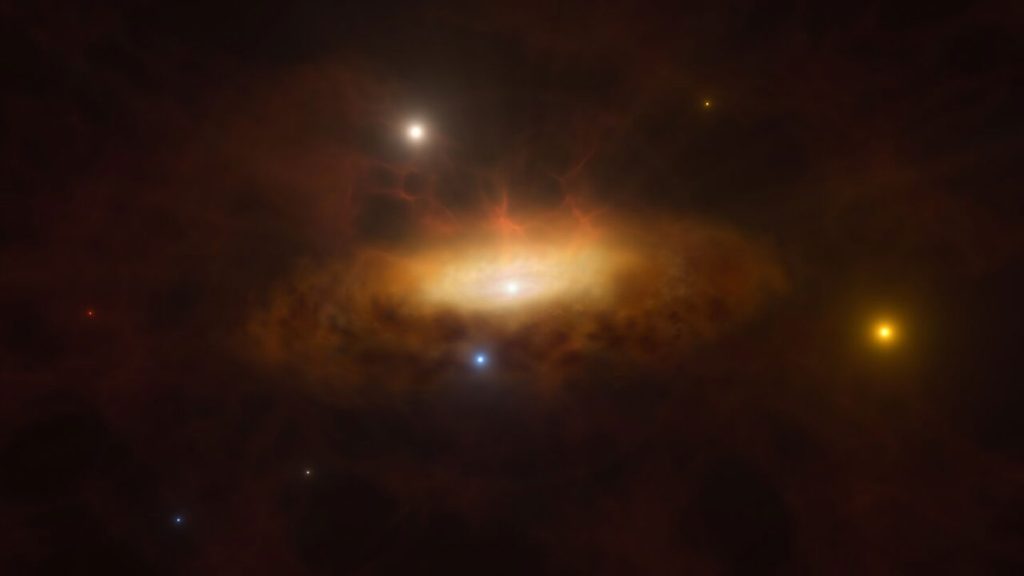A galaxy named SDSS1335+0728 located 300 million light-years from Earth has been observed transitioning from dim and quiet to bright and active over the past four years. This transition, the first time such a phenomenon has been observed in real-time, provides valuable insights into the processes behind active galactic nuclei (AGN). AGNs occur when supermassive black holes consume huge amounts of material, becoming bright enough to be seen from across the universe. Scientists initially observed SDSS1335+0728 brightening dramatically in optical wavelengths in December 2019, leading to the discovery of its unusual activity.
Initially thought to be a normal AGN candidate, further analysis of archival data spanning 20 years revealed that SDSS1335+0728 had not previously displayed any signs of activity. Black holes can brighten when they consume stars, a process known as a tidal disruption event, where material from the destroyed object heats up and produces bright radiation. However, these events are short-lived, lasting for a few days or months at most. The prolonged brightness observed in SDSS1335+0728 indicated a different phenomenon, capturing the attention of researchers worldwide.
The supermassive black hole in SDSS1335+0728 was observed glowing in X-rays in February, along with other wavelengths, indicating the formation of an AGN for the first time. While the exact cause of this activity remains unclear, it is speculated that SDSS1335+0728 may be consuming a smaller satellite galaxy that has collided with it. The researchers are planning to conduct follow-up observations using advanced telescopes such as NASA’s James Webb Space Telescope and the Extremely Large Telescope to understand the movement of gas around the black hole and gain more insights into this unique event.
The observations of SDSS1335+0728 provide a rare opportunity to study the formation of AGNs and the growth of supermassive black holes. By closely monitoring this galaxy’s transition from darkness to brightness, researchers hope to unravel the mysteries surrounding the processes that power AGNs. The ability to witness such a transition in real-time opens up new possibilities for understanding the nature of black holes and the mechanisms behind their activity. Future observations with advanced telescopes are expected to shed more light on the unfolding events within SDSS1335+0728 and contribute significantly to our understanding of the universe.
In conclusion, the discovery of SDSS1335+0728’s remarkable transition from a dormant state to an active, bright phase offers a unique glimpse into the cosmic processes at play. Through meticulous observation and analysis, scientists aim to unravel the mysteries surrounding the formation of AGNs and the growth of supermassive black holes. The ongoing research on SDSS1335+0728 highlights the importance of continuous exploration and monitoring of celestial phenomena to expand our knowledge of the universe and its underlying mechanisms.


